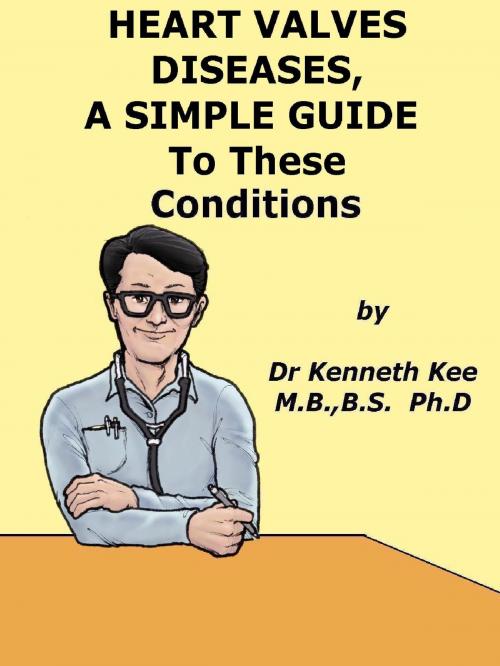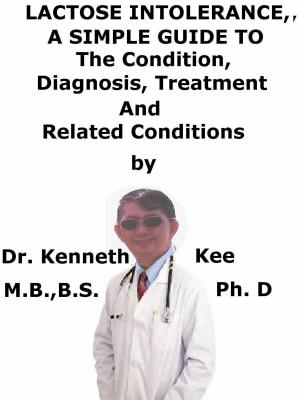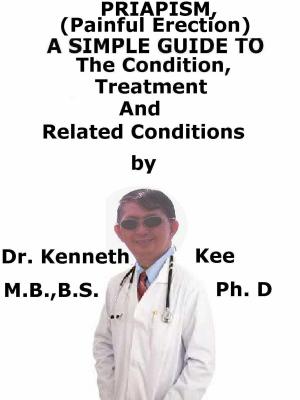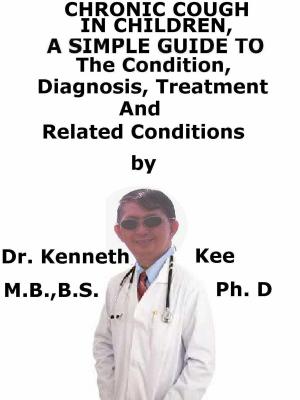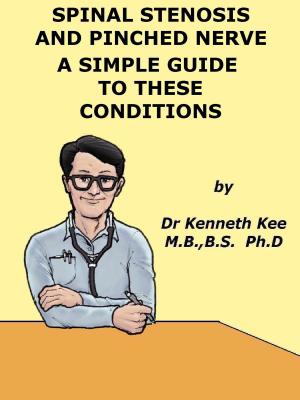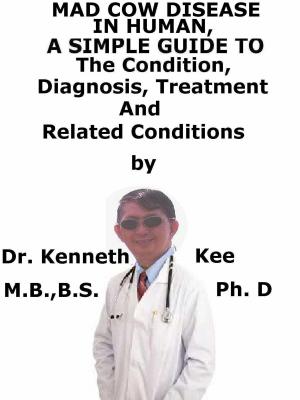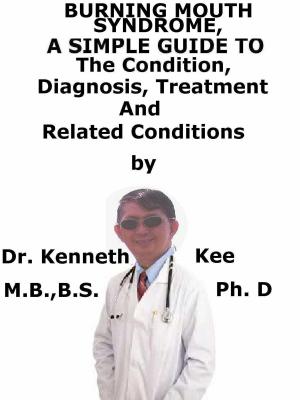Heart Valve Diseases, A Simple Guide to These Conditions
Nonfiction, Health & Well Being, Medical, Specialties, Internal Medicine, Cardiology, Health, Ailments & Diseases, Heart| Author: | Kenneth Kee | ISBN: | 9781311721686 |
| Publisher: | Kenneth Kee | Publication: | January 16, 2015 |
| Imprint: | Smashwords Edition | Language: | English |
| Author: | Kenneth Kee |
| ISBN: | 9781311721686 |
| Publisher: | Kenneth Kee |
| Publication: | January 16, 2015 |
| Imprint: | Smashwords Edition |
| Language: | English |
Heart valve diseases are outside the field of most family doctors because of the difficulty in the treatment. It is more of a cardiologist’s field.
However the sounds of the heart murmurs and heart clicks still fascinate me.
What is important from a family doctor’s perspective is to differentiate the heart valve diseases and send them for treatment.
I have specifically devoted a chapter to differential diagnoses of the heart valve diseases.
Proper treatment of the heart valve diseases is important.
The human heart has four chambers which are the two superior atria and two inferior ventricles.
The atria are the receiving chambers and the ventricles are the discharging chambers
Deoxygenated blood flows through the heart in one direction, entering through the superior vena cava into the right atrium and is pumped through the tricuspid valve into the right ventricle before being pumped out through the pulmonary valve to the pulmonary arteries into the lungs.
The oxygen is absorbed from the air sacs of the lungs.
It returns from the lungs through the pulmonary veins to the left atrium where it is pumped through the mitral valve into the left ventricle before leaving through the aortic valve to the aorta
The 4 valves are in order of blood flow:
- Tricuspid
- Pulmonary
- Mitral
- Aortic
The valve is like a tap in the blood circulation pump in the heart.
Normally, these valves open to let blood flow through or out of your heart, and then shut to keep it from flowing backward.
In heart valve disease, blood can leak back through the valve in the wrong direction, which is called regurgitation
One of the valves, the mitral valve, sometimes has floppy flaps and does not close tightly.
This is called mitral valve prolapse, and it is one of the most common heart valve conditions.
Sometimes it causes regurgitation
When the valve does not open enough and blocks blood flow, it is called stenosis
What are the types of heart valve disease?
Types of valve disease:
- Aortic valve disease
a. Aortic regurgitation
b. Aortic stenosis
c. Aortic sclerosis
d. Bicuspid aortic valve
- Mitral valve disease
a. Mitral regurgitation
b. Mitral stenosis
c. Mitral valve prolapse
- Pulmonary valve disease
a. Pulmonary regurgitation
b. Pulmonary stenosis
- Tricuspid valve disease
a. Tricuspid regurgitation
b. Tricuspid stenosis
All valve diseases can be acute or chronic.
What are the causes of Heart Valve Disease?
Causes:
Valve problems can be caused by:
- Congenital or present at birth
Congenital heart valve disease often involves pulmonary or aortic valves that do not form properly.
These valves may have inadequate tissue in the flaps.
They can be the wrong size or shape
They can lack an opening through which blood can flow properly.
- Infections such as:
a. Rheumatic fever
Untreated streptococcus throat or other infections with strep bacteria that progress to rheumatic fever can cause heart valve disease.
In the body’s fight against the streptococcus infection, one or more heart valves may be damaged or scarred in the process.
The most affected are aortic and mitral valves.
Symptoms of heart valve damage often do not appear until many years after recovery from rheumatic fever.
b. A rare but serious infection called infective endocarditis or IE allows the germs to enter the bloodstream through needles, syringes or other medical devices and through breaks in the skin or gums.
Frequently the body's defenses is able to fight off the germs and no infection occurs.
Sometimes these defenses fail, which leads to IE.
IE can develop in people who already have abnormal blood flow through a heart valve as the result of congenital or acquired heart valve disease.
The abnormal blood flow causes blood clots to form on the surface of the valve.
The blood clots make it easier for germs to attach to and infect the valve.
IE can worsen existing heart valve disease.
Heart valve diseases are outside the field of most family doctors because of the difficulty in the treatment. It is more of a cardiologist’s field.
However the sounds of the heart murmurs and heart clicks still fascinate me.
What is important from a family doctor’s perspective is to differentiate the heart valve diseases and send them for treatment.
I have specifically devoted a chapter to differential diagnoses of the heart valve diseases.
Proper treatment of the heart valve diseases is important.
The human heart has four chambers which are the two superior atria and two inferior ventricles.
The atria are the receiving chambers and the ventricles are the discharging chambers
Deoxygenated blood flows through the heart in one direction, entering through the superior vena cava into the right atrium and is pumped through the tricuspid valve into the right ventricle before being pumped out through the pulmonary valve to the pulmonary arteries into the lungs.
The oxygen is absorbed from the air sacs of the lungs.
It returns from the lungs through the pulmonary veins to the left atrium where it is pumped through the mitral valve into the left ventricle before leaving through the aortic valve to the aorta
The 4 valves are in order of blood flow:
- Tricuspid
- Pulmonary
- Mitral
- Aortic
The valve is like a tap in the blood circulation pump in the heart.
Normally, these valves open to let blood flow through or out of your heart, and then shut to keep it from flowing backward.
In heart valve disease, blood can leak back through the valve in the wrong direction, which is called regurgitation
One of the valves, the mitral valve, sometimes has floppy flaps and does not close tightly.
This is called mitral valve prolapse, and it is one of the most common heart valve conditions.
Sometimes it causes regurgitation
When the valve does not open enough and blocks blood flow, it is called stenosis
What are the types of heart valve disease?
Types of valve disease:
- Aortic valve disease
a. Aortic regurgitation
b. Aortic stenosis
c. Aortic sclerosis
d. Bicuspid aortic valve
- Mitral valve disease
a. Mitral regurgitation
b. Mitral stenosis
c. Mitral valve prolapse
- Pulmonary valve disease
a. Pulmonary regurgitation
b. Pulmonary stenosis
- Tricuspid valve disease
a. Tricuspid regurgitation
b. Tricuspid stenosis
All valve diseases can be acute or chronic.
What are the causes of Heart Valve Disease?
Causes:
Valve problems can be caused by:
- Congenital or present at birth
Congenital heart valve disease often involves pulmonary or aortic valves that do not form properly.
These valves may have inadequate tissue in the flaps.
They can be the wrong size or shape
They can lack an opening through which blood can flow properly.
- Infections such as:
a. Rheumatic fever
Untreated streptococcus throat or other infections with strep bacteria that progress to rheumatic fever can cause heart valve disease.
In the body’s fight against the streptococcus infection, one or more heart valves may be damaged or scarred in the process.
The most affected are aortic and mitral valves.
Symptoms of heart valve damage often do not appear until many years after recovery from rheumatic fever.
b. A rare but serious infection called infective endocarditis or IE allows the germs to enter the bloodstream through needles, syringes or other medical devices and through breaks in the skin or gums.
Frequently the body's defenses is able to fight off the germs and no infection occurs.
Sometimes these defenses fail, which leads to IE.
IE can develop in people who already have abnormal blood flow through a heart valve as the result of congenital or acquired heart valve disease.
The abnormal blood flow causes blood clots to form on the surface of the valve.
The blood clots make it easier for germs to attach to and infect the valve.
IE can worsen existing heart valve disease.
